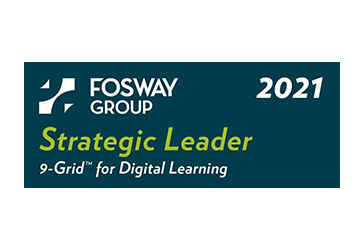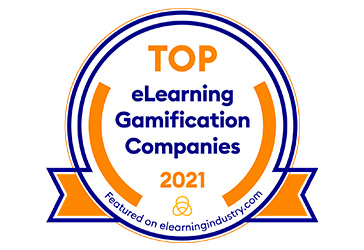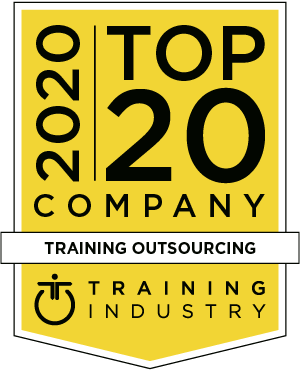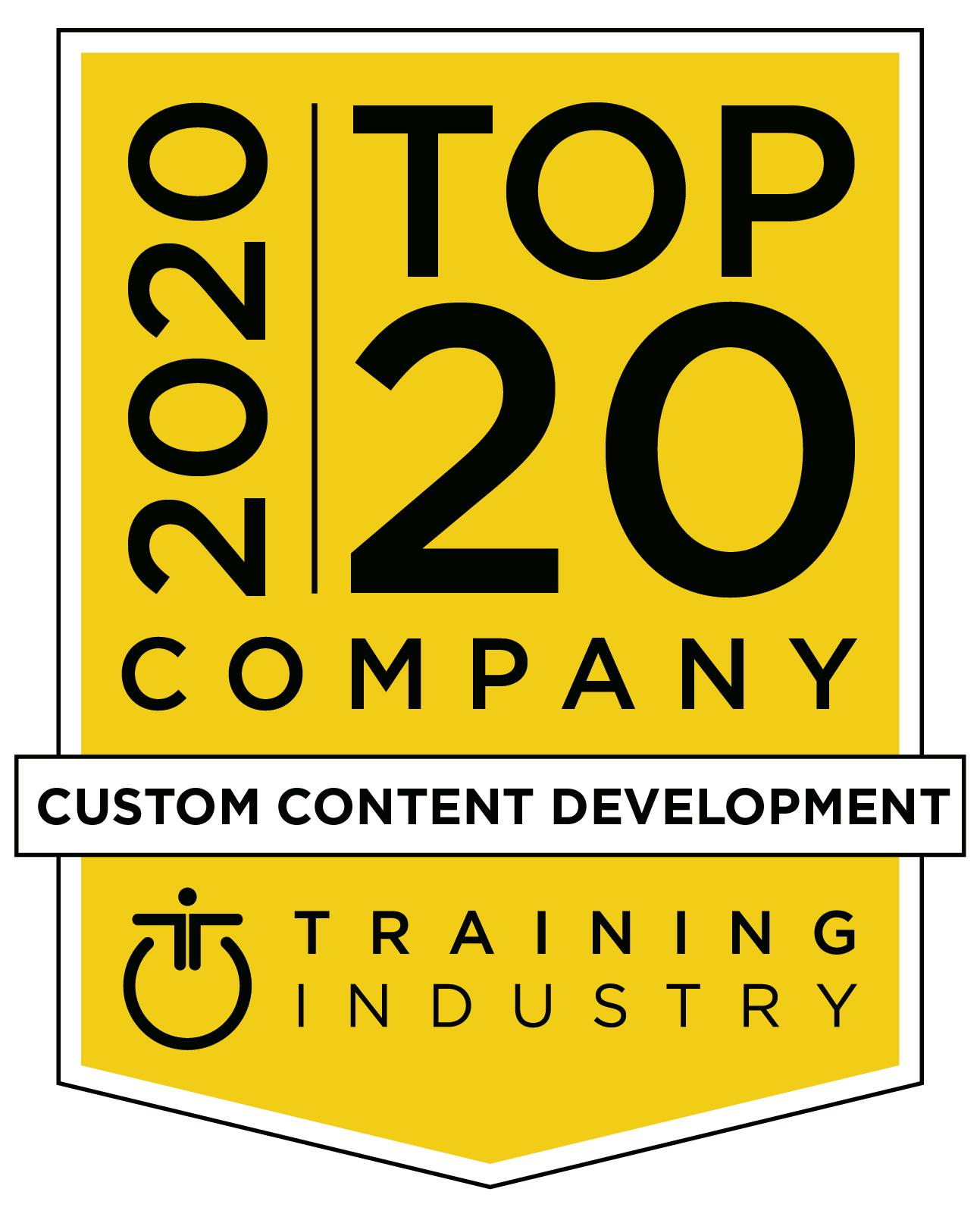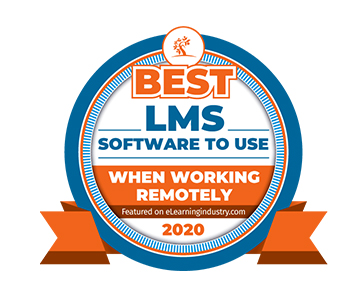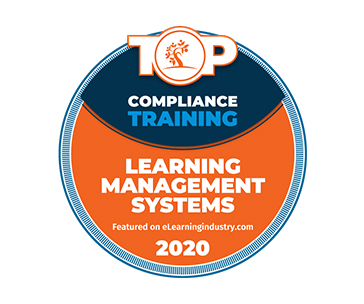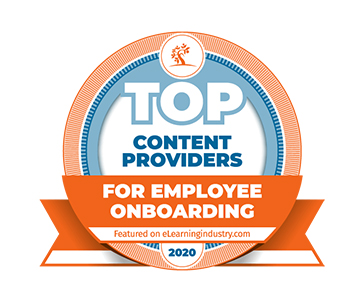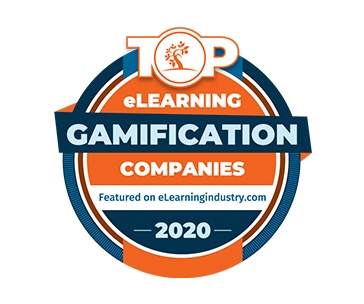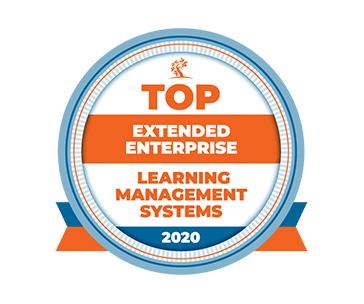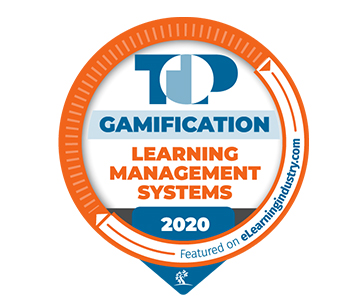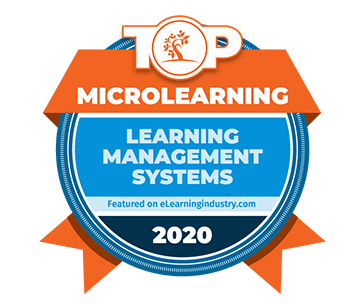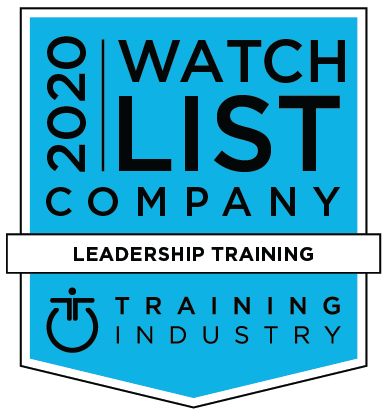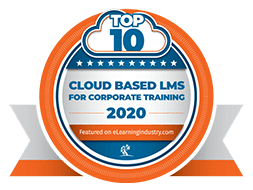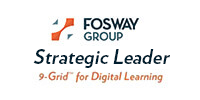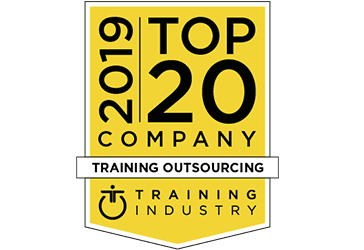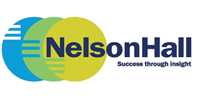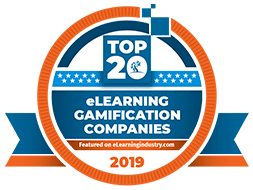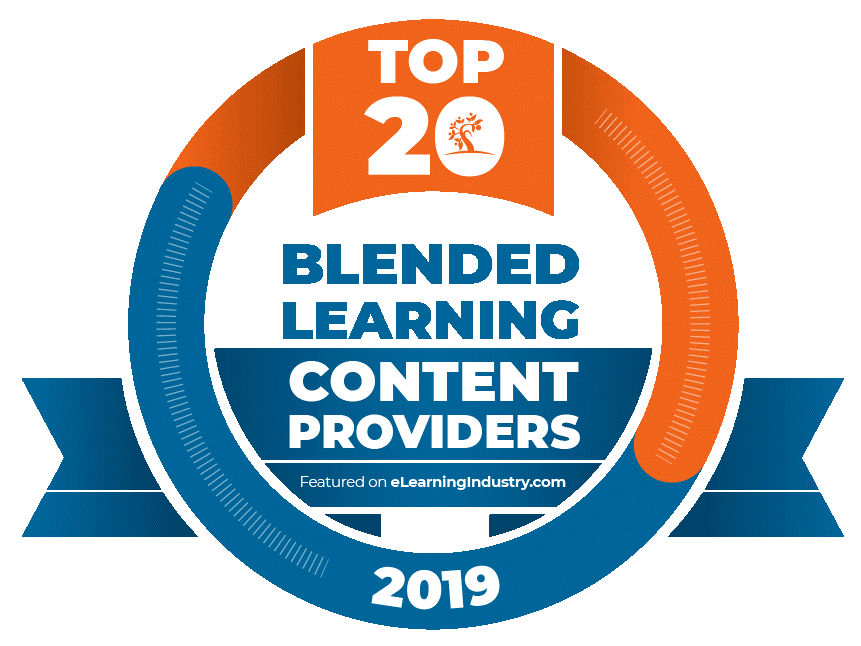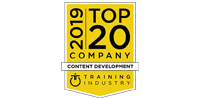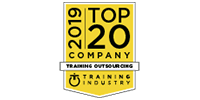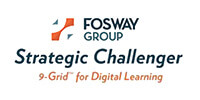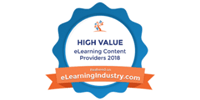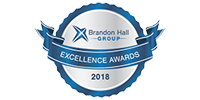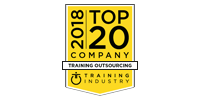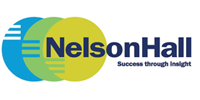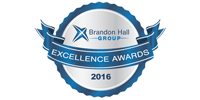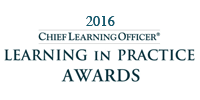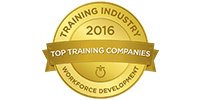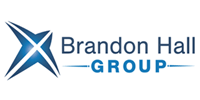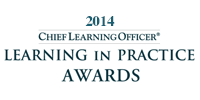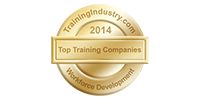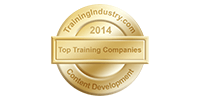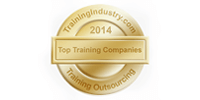The business world has changed in the past few months at a dramatic pace, with the far-reaching effects of the global pandemic of Covid-19. Organizations are confronting a “new normal” that has taken most of us by complete surprise. But the spirit of human nature is to preserve – in the face of challenges. The business world thus must explore ways of effectively navigating through the new normal and find the most effective strategies to thrive. Growth and business success in this new era will be rely on how willing organization leaders are willing to stray from their comfort zone and challenge their traditional ways.
Sriraj Mallick, President, Infopro Learning along with David Wilson, the Founder and CEO of Fosway Group, led an insightful discussion on the business conditions that confront us today. With Chris Wells, a seasoned learning professional, as the mediator, the session brings out strategies that can be explored to best navigate through these challenging times.
Listen to the Podcast to learn more:
Question:
What are the biggest risks, that learning leaders are facing in today’s dynamic environment?
Question:
What are organizations doing to minimize the risks that they are facing today, considering the current scenario?
Question:
What can organizations do to achieve cost efficiencies while delivering performance improvement for the business?
Question:
How has the relationship between L&D buyers and suppliers evolved under the current scenario?
Expert profile:

Sriraj Mallick, President, Infopro Learning, a full-service L&D outsourcing company, solving biggest learning, training and performance improvement challenges of organizations for over 25 years.

David Wilson, Founder and CEO of Fosway group – Europe’s and one of the World’s leading HR industry analysts, providing leading research and insights for next gen HR talent and learning.

Chris Wells, Learning Professional, with over 20-years’ experience in growing Technology & Services Firms in Europe & the US.
An excerpt of the complete discussion follows:
Q: We find ourselves in some interesting times and we would love to get some insightful perspective from your intensive and very current experience, in HR, Learning and Training.
To begin with, what are the biggest risks, that learning leaders across the world are facing in today’s dynamic environment?
David: That’s a very relevant question, in today’s business environment. The last three or four months, particularly with the Covid-19 pandemic, the whole world has changed. And certainly, from the point of view of learning, the whole business world has changed. The biggest challenge that organizations are facing, is just responding to the pandemic and the consequences of it that is seen with remote workforce, employee engagement and so on.
It is paramount for organizations to be able to be more agile in terms of delivering learning, reaching out remote workforce and ultimately being able to deliver strong outcomes. That’s a shift from just ticking boxes and viewing learning as access to online content. That’s really a profound change.
Obviously, the impact has also affected investment patterns. Around 25 percent of the staff on average, across organizations, probably have been furloughed as well. So, Organizations are trying to fundamentally transform the way they’re engaging with their employees. The classroom operations are no longer working for them in the short term, for obvious reasons. And they are significantly, diversifying the types of learning – all of which is putting up a huge challenge.
One interesting data point around that is that 59% of learning teams, according to a recent research we conducted, still feel they’re immature around the use of digital learning technology. And that, being the only game in town now, massively impacts their ability to respond. So, it is three times more difficult for immature organizations to respond to these challenges than organizations that are mature.
Sriraj: To this point, I can share some findings from the ‘2019 Global Risks Report’ by the World Economic Forum. The report places the likelihood of spread of infectious disease below average then several other risks in 2019. In fact, the spread of infectious disease does not even make it to the top ten risks in 2019 in the World Economic Forum report.
So, it is safe to say that no one had anticipated the situation today. From my conversations with several learning leaders, it evident that we are in fascinating times. It’s also a very humbling experience hear the immense challenges that they are facing – how they must meet business goals as well as achieve outcomes at a much-reduced cost. Those are real challenges our learning leaders are facing.
Through a series of conversations and dialogues with learning leaders, I can essentially segregate the challenges into different themes.
Earlier physical proximity was required to get the work done and now we are using digital collaboration tools like Teams, Zoom or Slack to work in distributed teams or remote environments. Our learning leaders are also facing the risk of losing connection and organizational culture that drives business performance and creates employee engagement. Learning leaders are trying to figure ways to enable integration between employees while making sure that their organizational culture is maintained.
I was speaking with a senior learning leader one of the largest banks in Europe and he shared that positive aspect of remote working environment is that it acts as an equalizer in many ways. Earlier, with some of us in physical locations and some in remote locations, there would be an inevitable bias. Now everyone is working remotely, so there’s a definite equalization. There is industry research to show that there’s some bias when employees work together in a headquarter or a regional location with senior leaders. Working remotely removes some of those biases and that’s insightful.
Learning leaders are concerned more with long-term than short-term benefits of the leadership capabilities they are developing within the organization. Especially since leaders are now exposed to different situations and adapting to them. This has led our learning leaders to rethink their entire leadership curriculums and leadership programs.
Q: As a follow-up question, what are organizations doing to minimize their risks?
Sriraj: Organizations are working with different priorities but all of them are trying to figure out some solution in a very short timeframe. Time is a critical component – this has come quickly, there was no notice and hence, no planning to accommodate to the situation.
Learning leaders are forced to be very innovative in finding new approaches and new solutions to some of challenges I shared. As an example, massive scale conversion of instructor-led programs to virtual training programs or digital training programs are going on in several companies. We are supporting a lot of them and we are also seeing a need to make virtual or digital programs more engaging and interactive. We must ensure a higher level of personalized learning experience and we are clearly seeing a trend of modernizing learning programs especially onboarding programs – in terms of scenarios from the workplace, the processes, value-creation for clients and so on. Learning leaders are quickly accommodating to this new requirement and modernizing their onboarding programs.
Another trend is the demand for software tools and applications training especially with the popularity of tools like Zoom, Slack, SharePoint and Microsoft Teams. How can employees use them better and how they can be utilized for training as well – that’s something that organizations are willing to explore.
Another trend to minimize risk is that a lot of executive coaching is being conducted around ways of engaging with employees and team members virtually. Learning leaders are willing to take a step back to think long term and look at the new capabilities, especially for their executives. These would include empathy, resilience, courage, digital awareness and so on. They’re trying to recast leadership programs, but they’re looking for a long-term solution there.
David: For me, the biggest priority for organizations is to be relevant and being able to respond to the situation. For organizations, the biggest challenge is the pre exiting barriers to change and with the current scenario, how to navigate through them effectively. Sriraj mentioned ‘Time’ and that’s a critical factor. Nobody had any time to assess and put in a new solution in place. But something that we have all seen in the learning space, is that there’s a huge uptake and utilization of learning platforms. The danger, however, that it is driven more by the desire to reach, and that’s the lowest common denominator in terms of the impact. The first wave of response was to pivot and find a way of functioning and getting anything done, to start with. But ultimately, that must be superseded by the ability to make a difference. For a learning leader, they must look at their challenges and goals, within the organization and see how their renewed strategies will have an impact. That’s a difficult in an organization, that has traditionally been driven by a ‘business-as-usual’ agenda. The share of investments in learning has been around activities and training that they have to do or which reflect more history than future. The challenge then is how leaders transform those things and do that fast. The opportunity here quite obviously, is to simplify.
One of the easiest ways to minimize risk is to simplify what you’re trying to do, along the business needs and it does have the maximum impact. Sriraj makes a point of how organizations are picking up digital tools to cater to emerging needs of the workforce. An organization leader shared with me how they spent weeks on utilizing Zoom sessions to roll out learning modules to their employees! Sometime the people are way ahead of organizations in terms of utilizing these tools.
So ultimately, it boils down to’ what next’ in terms of navigating through the times. It is not so much as what all they did but how productive was the endeavor. For learning leaders, the most effective strategy to minimize risk would be to align to the result of training activities, while being agile to what comes next. This is not only in terms of the pandemic, but how it affects the workforce, the organization or the broader economy. The ‘V’ versus ‘U’ or the ‘W’ shaped recovery curve – it is difficult to predict.
Compared to pre-pandemic times, there is a lot of amplification of the risk as well as the need to change and that creates a lot of opportunities from a learning leader’s perspective.
Q: If we look back to our financial hardships of 2008, one resounding risk we saw was decreased budgets. And the theme was that we were asked to do more, with less resources. We’re hearing the same things said today. However, unlike 2008, the demand for training has been increasing significantly, as organizations realize the importance of training to engage remote employees. So, what are the ways that you are seeing organizations achieve cost efficiencies while delivering performance improvement for the business?
Sriraj: We are seeing a lot of interest from organizations and learning leaders who must balance cost reduction on one side and meeting their goals on the other. Specifically, in areas of how that impacts business and performance, organizations are trying to achieve variable costs to meet peaks and valleys of the demand effectively. When we look at these challenges in current scenario, learning leaders and organizations are reaching out to strategic sourcing organizations and initiating a process for managed learning services with learning suppliers. We have seen a surge in such requests from our customers.
What happens as a result, that going into such relationships with suppliers, learning leaders can contain cost and they are able to manage cost variables. They particularly can see a lot of efficiencies in areas such as learning administration or training delivery or even LMS support. Consolidating a lot of vendors and automating the entire process end-to-end with managed learning, also creates a lot of operational efficiencies. They have also taken a keen interest in something that we do in such engagements and we call it an outcomes contract.
David was mentioned that performance impact and outcomes are as important as cost reduction. I feel these are the areas where learning leaders are focusing on – reducing costs as well as achieve the performance goals as promised to their business.
An outcomes contract essentially is a defined business metric that we have to achieve as a result of a training intervention. When we engage with our clients, we look into the training need, what does business wish to achieve, how is it measured and what can we doing in terms of designing our solution or our approach to align to all of that. This approach helps us and leads us to the outcome matrix. We then formalize that so that our clients can hold us accountable to those outcomes.
I’ll give you an interesting example from a recent example from a program we just concluded. This is a customer for whom we are training entry-level retail employees and one of the outcomes that we took on was to make sure that program 25% of those learners who complete our program get a promotion within the next six months in those roles. When we start thinking about this kind of business impact and not just checking the box or simply doing something for the sake of doing it, we change the context and have a goal for our learning design. The way we then craft the learning journey is based on that goal.
As a result, not only do we meet the learning goals, but business impact goals as well. The outcomes contract holds us accountable to make sure that we reach the set goals. This is a way we can talk to our clients more fruitfully and have a skin in the game as well.
David: Clearly, we see that learning budgets have been impacted. But we need to understand how much of it is going to be utilized and in what way. Being focused on being cost effective is going to be prudent. There has been been a long debate in the learning industry on how we deliver training – for instance the topic of digital versus face-to-face training. Whatever we do, we must realize that instead of doing it badly, it is better to not do it at all to gain more cost efficiencies – whatever the approach be. We must focus on delivering effective training, not just creating training that doesn’t have an impact.
I think some degree of understanding the outcome is the non-negotiable part of all this. And I think an outcome-based contract is interesting because you are creating a commercial model for success. Historically, L&D has not been too focused on the outcomes of training beyond learning objectives. I think that’s been a massive detriment. Some organizations look for engagement or activity metrics. But that doesn’t really prove anything to anybody. And that’s been possibly one of the greatest limitations for learning leaders, not really having a seat at the executive table, the way they should have been. But in this business climate, organizations must be aware of the transition. And all business and learning leaders must show how training can impact an organization and highlight key outcomes. That is going to attract budgets. I think clear strategy must be formed in terms of training, how the funds for it must be procured and how it will bring value for the organization.
These are all very important considerations. We will also see a fast transition to digital delivery. We are still doing very basic things, that’s the first stage of maturity to responding to the challenge at hand. But ultimately, we’re not likely to change back to the stage before. In fact, we’ve got data that clearly says, according to our recent research, 67% of organizations share that they’re not going back to the mode that they were before. Keeping that in mind, we need to transform more, explore more around what learning can do in an organization. Organizations must focus not on just performance today but to thrive tomorrow and to respond to the economic climate. To do that, to be accountable for outcome, is a central paradigm that learning must engage with. That trumps being focused on cost efficiencies – because at the end of the day, if you can prove that you made a difference, that will attract budget.
On the digital side of things, organizations are already investing to implement technology that they didn’t have in place. We see 10% of organizations are spending on completely new solutions and 21% of organizations are extending licenses and other technologies already in place. Money and budgets are available, but it must be spent wisely. Ultimately, it must highlight a positive difference.
From a vendor perspective, the more value you are willing to give, rather than just selling products on license basis, it is easier for learning leaders to engage with you. That’s why I think I would support an outcome-aligned approach, although it’s not necessarily for the faint of heart. I have seen organizations struggle with it in past and struggle with the ways of delivering it, so certainly this is an attractive idea.
Q: How has the relationship between L&D buyers and suppliers evolved under the current scenario? Are organizations expecting something different from their suppliers? From the perspective of the supplier, is there a shift in what you’re offering to suit the new needs of your client?
David: Partnerships, as a word is easy to use, but sometimes hard to deliver. One of the challenges that organizations face, is to align their learning teams and the suppliers. The relationship between learning teams and learning providers is critical – that must be worked upon.
The other thing is the agility on both sides of the equation. One of the challenges in the outsourced world is, that there have been a lot of contracts become transactional. A lot of that is around cost arbitrage. I think the reality is that it is hard to understand the full nature of organizational priorities – even for months ahead. Organizations have had to understand government policies and then align to them almost overnight. I think, being agile is important and it is critical to create agile relationships between organizations and learning vendors. The diversity and skills that are present in the relationship will help leverage the partnership effectively. It is easy, in transactional contracts to buy a bulk-load of one thing – whether e-learning content production or face-to-face training administration. How the organization can utilize it, stems out of something more than a transactional partnership.
In the current climate, we have seen vendors being very understanding from a client-perspective. From the buyer end, we’ve seen organizations trying to simply what they’re trying to do and focus on things that are going to make a difference. We must be resilient, relevant and agile. We also need the diversity of capability to adapt to situations that we may not be able to predict now. Both buyer and supplier must be focused on outcomes that really matter to the organization.
Sriraj: The central theme is built around agility, which David talks about at length. I absolutely agree and concur that the partnership between a supplier and the customer really blooms when there is strong alignment. The huge successes we have is abiding to outcome contract so that there’s alignment with the goals. What does success look – are we looking at the same end results as our client? This vision helps us in building the right partnerships.
Agility has a lot to do with the culture of the organization. I also feel automation plays a big role in making you agile. Firstly, there is the culture and the processes an organization follows to be agile. Secondly, it depends on kind of automation or digitalization you have built in your organization.
We have deliberately over the last four or five years, consolidated everything we do in terms of investment in R&D, in innovation as well as new services, around our three brand promises. The first is around delivering personalized learning experience. Everything we have done in terms of adding new services or new solutions or creating learning experience, has been around the ways of making it more experiential, more engaging and interactive. The second promise is around measurable performance, that emerges out of our outcomes contract. Our third brand promise is around operational excellence. We try to see reduce the time and effort when creating a solution. We also try to reduce costs by automating almost every aspect of a learning organization – from training scheduling to administration and moderation. This has allowed us to significantly reduce the time, effort and cost which we pass on to our customers.
Cost arbitrage is just one dimension of value creation for customers and I believe customers are now looking for suppliers who can do that along with achieving business outcomes. All of it together is driving us to enrich our services and rise to client expectations.




